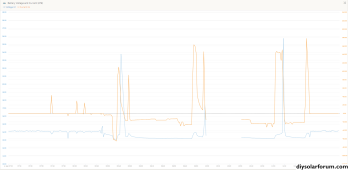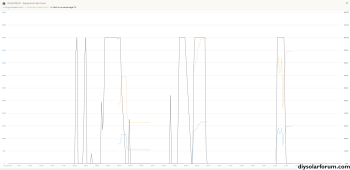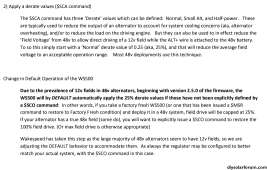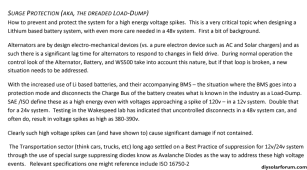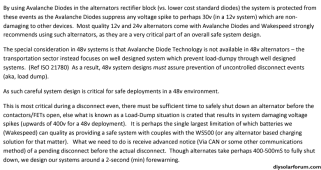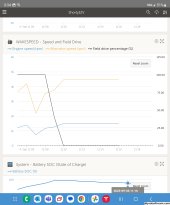hwse
Solar Enthusiast
- Joined
- Jan 2, 2021
- Messages
- 585
1. were the shunt extension wires a twisted pair or shielded wire with a ground on one end? That length you can get a big emf error.Totally makes more sense now.
1. I ran a couple pairs of cables all the way to the front so the sense voltage was at the lynx distributor right by the batteries 40ft. Same with the shunt wires.
2. I changed some settings for the profile and such to match how I wanted to charge. Also set a limit of 250a then down to 200a. Went through every setting and all is right, only thing was I never got the pulley size right so the rpm was off but didn't use that. Just used a 1 min delay before turning on
3. I don't. I love the wakespeed and it integrates with Victron so I could watch how much it's working and my alt temps. But my alt is 24v and batteries are 12v and 48v separate systems. I should swap my 12v quattro for a 24v one and just use a 24/12 Orion for 12v loads since it's just lights and electronics... or just use 120v to 12v as I also have this setup as a backup. My battery bms's are fried I think so can get a 24v bms.
I did buy a 24v regulator for my 50dn alt so I could get rid of the wakespeed.
I think I could use the wakespeed as a 12v and just connect my 12v generator battery so it'll help absorb any spikes... as it's also a separate system. But 12v would be half the watts through the 2/0.
Another option I've been thinking is a 48v 100a balmar and have a 3rd alt as I have a bracket for it and room. But it's 3k and I don't need that much power. 2kw for my main 48v system and 2kw for the aux 12v system is plenty.
2. You do not really need rpm and it does not need to be accurate any way. that is mainly there so that you can depower the alternator on small engines so that you have the power needed for propulsion. On my boat, I have a 21hp diesel and if I am swinging a 160A alternator, it will kill the engine at idle and would overload the engine at max cruising speed. In my case, the whitespace is a big deal.
3. I am not sure about the 24 vs 12 issue. I believe that it could work as you intend because there is nothing in an alternator that sets the voltage output other than the regulator. Even it does not tell the alternator to "make 14.4v". It tells the alternator to make power [watts] and the resistance that it runs into determines the volts. P=I^2 x r. or P = V x I. Once the regulator is happy with the voltage it sees at the sense wires, it reduces the field current which lowers the power output to maintain that voltage. The old Chevy DN10 alternators were used on 6v, 8v, 12v, & 24v systems and the only thing that changed was the regulator. You can also take a standard 10SI automotive alternator and boost its output to 16v by installing a small resistor on the excite wire.
4. the WS500 will work on 12, 24, 36v & 48, systems.



